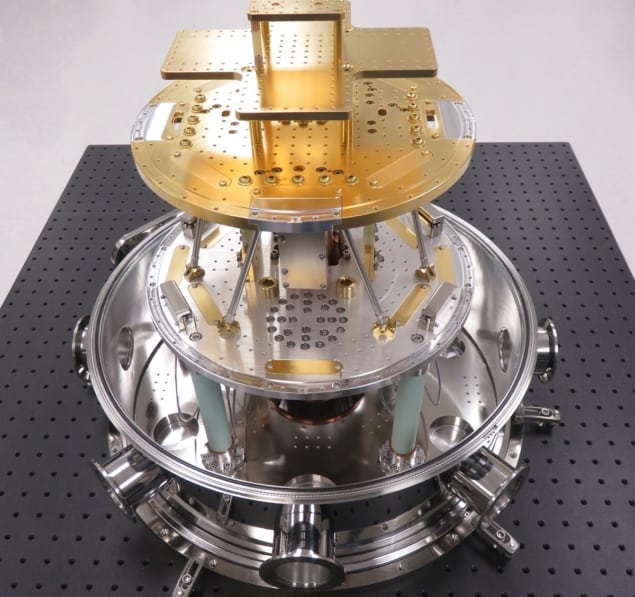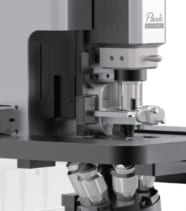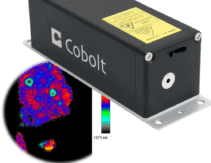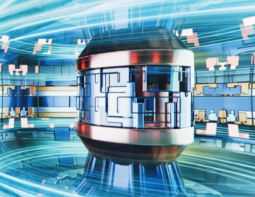
The biggest event for the global physics community, the March meeting of the American Physical Society, lands in in the historic city of Boston, Massachusetts, on 4–8 March 2019. Some 11,000 physicists from all over the world will convene at Boston’s largest convention centre – located in the newly thriving Seaport district – eager to hear about the latest research breakthroughs and technical innovations.
Along with the scientific programme, physicists attending the meeting will have the opportunity to engage first-hand with some of the world’s leading suppliers of scientific equipment and software. Many will be introducing new devices and instruments that have been designed specifically for cutting-edge physics research – some of which are detailed below.
All-in-one Hall system speeds up measurement
Lake Shore Cryotronics, which provides measurement and control solutions for low-temperature and magnetic-field conditions, will be demonstrating an integrated instrument for complete Hall analysis at Booth 400. Ideal for semiconductor material research, the company says that the MeasureReady M91 FastHall measurement controller is faster and more accurate than traditional Hall solutions, while also being easier to use.
 Combining all the necessary Hall measurement system functions into a single instrument, the M91 automatically executes measurement steps and enables most commonly measured materials to be analysed within a few seconds – including those with low mobility. This speed of measurement is enabled in large part by Lake Shore’s patented FastHall technology, which eliminates the need to reverse the magnetic field during the measurement. This is particularly beneficial when using superconducting magnets, which are relatively slow at completing field reversals.
Combining all the necessary Hall measurement system functions into a single instrument, the M91 automatically executes measurement steps and enables most commonly measured materials to be analysed within a few seconds – including those with low mobility. This speed of measurement is enabled in large part by Lake Shore’s patented FastHall technology, which eliminates the need to reverse the magnetic field during the measurement. This is particularly beneficial when using superconducting magnets, which are relatively slow at completing field reversals.
You can find out more about the M91 at Booth 400, while Lake Shore application scientists will be presenting M91 measurement data during the technical sessions: David Daughton, 9:48 a.m. Wednesday 6 March in BCEC Room 152; and Jeffrey Lindemuth, 12:15 p.m. Friday 8 March in BCEC Room 108.
Cryogenic platform offers low-vibration testing
US company HPD, which designs and manufactures research cryostats for low-temperature physics, has introduced an improved version of its 4 K cryogenic probe station. The low-vibration Model 125 Probe Station exploits actuators that are thermally anchored at 4 K, which guarantees that the sample will be maintained at a stable cryogenic temperature throughout the experiment.
The Model 125 can be configured to host either individual chips or whole wafers. Other options include translations up to the full diameter of the wafer, window shutters, coaxial cables and sample magnets. HPD is also able to optimize the Model 125’s configuration to meet the needs of specific applications.
Visit HPD at Booth 333 to learn more about the Model 125, and to find out about HPD’s adiabatic demagnetization refrigerator (ADR) cryostats that provide one-shot testing platforms as cold as 40 mK, with regulation times at 100 mK of more than 200 hours.
Combined microscope offers flexibility at the nanoscale
An affordable and versatile platform for analytical chemistry and electrochemistry has just been released by Park Systems. The Park NX12 combines an inverted optical microscope (IOM) with an atomic force microscope to enable advanced research on materials such as membranes, organic devices and electronics, and biological and pathological samples.
 “We just purchased the Park NX12 because we wanted a research-grade platform for AFM and scanning-ion conductance microscopy (SICM) that was also easy to use,” commented Dr Yixian Wang at the California State University in Los Angeles. “The Park NX12 was the only comprehensive platform that could perform all scanning probe techniques – including pipette-based SICM – while also utilizing IOM for the nanoscale measurement flexibility we needed.”
“We just purchased the Park NX12 because we wanted a research-grade platform for AFM and scanning-ion conductance microscopy (SICM) that was also easy to use,” commented Dr Yixian Wang at the California State University in Los Angeles. “The Park NX12 was the only comprehensive platform that could perform all scanning probe techniques – including pipette-based SICM – while also utilizing IOM for the nanoscale measurement flexibility we needed.”
According to Park Systems, the NX12 is ideally suited for multi-user facilities, with a modular design that lends itself to further development. It has also been designed to handle the pipette probes commonly used to study the electrochemistry of transparent materials such as nanopore membranes for fuel cells and biomembranes.
You can find out about Park Systems’ full range of microscopy solutions at Booth 406.
Narrow-wavelenth laser diodes extend Raman to more wavelengths
Cobolt AB, a laser manufacturer that is part of HÜBNER Photonics, has added two new laser diodes operating at 633 nm and 785 nm to its range of devices for high-resolution Raman spectroscopy. Both devices are frequency-stabilized, narrow-linewidth laser diodes with a linewidth of less than 20 pm, and both include an integrated optical isolator.
 The Cobolt 08-NLD 633 nm offers an output power of up to 30 mW, while the single-transverse mode 08-NLD 785 nm delivers up to 120 mW. All Cobolt lasers are manufactured using proprietary HTCure technology, which yields a compact hermetically sealed package for exceptional reliability in changing environmental conditions.
The Cobolt 08-NLD 633 nm offers an output power of up to 30 mW, while the single-transverse mode 08-NLD 785 nm delivers up to 120 mW. All Cobolt lasers are manufactured using proprietary HTCure technology, which yields a compact hermetically sealed package for exceptional reliability in changing environmental conditions.
With a demonstrated lifetime in excess of 60,000 hours, Cobolt says that its lasers deliver excellent performance in both laboratory and industrial environments, and are offered with market-leading warranty terms.
Representatives from Cobolt will be at Booth 546 to provide more details about its full line of laser diodes and diode-pumped solid-state lasers.




